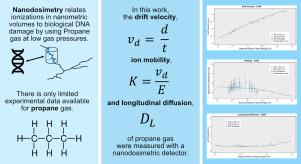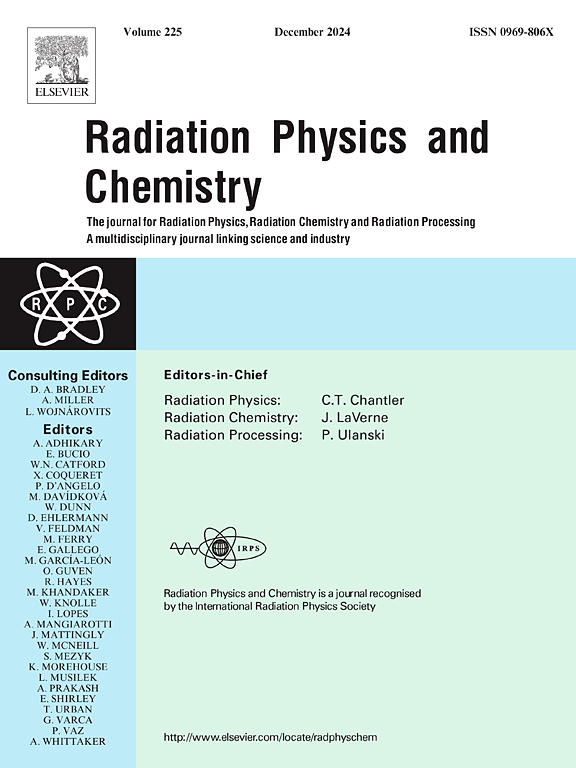利用纳米计量探测器测量丙烷气体的扩散和迁移率
IF 2.8
3区 物理与天体物理
Q3 CHEMISTRY, PHYSICAL
引用次数: 0
摘要
要使用丙烷气体操作纳米计量探测器,必须了解气体在室温下的特性,如漂移速度、离子迁移率、纵向和横向扩散系数。关于丙烷气体的离子迁移率和横向扩散系数,目前只有有限的实验数据。在这项工作中,根据到达时间测量,在 24 到 212 Td(1 Td = 10-17 Vcm2)的还原电场 E/N 范围内获得了丙烷的漂移速度和离子迁移率。丙烷的还原离子迁移率 K0 被确定为 (0.71±0.09) cm2/Vs。根据实验到达时间光谱的宽度确定了纵向扩散系数,发现在低于 30 Td 的低场极限中,纵向扩散系数为 NDL = (3.7 ± 0.5)⋅1019 1/ms。本文章由计算机程序翻译,如有差异,请以英文原文为准。

Diffusion and mobility measurements for propane gas with a nanodosimetric detector
For the operation of nanodosimetric detectors with propane gas, it is essential to know the gas properties at room temperature, such as drift velocity, ion mobility, longitudinal and transversal diffusion coefficients. For propane gas there is only limited experimental data available for the ion mobility and transverse diffusion coefficients. In this work, the drift velocities and ion mobilities for propane were obtained over the reduced electric field range from 24 to 212 Td (1 Td = Vcm) based on arrival time measurements. The reduced ion mobility for propane was determined to be cmVs. The longitudinal diffusion coefficients were determined from the widths of the experimental arrival time spectra and found to be = (3.7 0.5) 1/ms in the low field limit below 30 Td.
The results presented in this work extend the range of available experimental data for propane, as well as introduce first experimental measurements of the longitudinal diffusion coefficient of propane.
求助全文
通过发布文献求助,成功后即可免费获取论文全文。
去求助
来源期刊

Radiation Physics and Chemistry
化学-核科学技术
CiteScore
5.60
自引率
17.20%
发文量
574
审稿时长
12 weeks
期刊介绍:
Radiation Physics and Chemistry is a multidisciplinary journal that provides a medium for publication of substantial and original papers, reviews, and short communications which focus on research and developments involving ionizing radiation in radiation physics, radiation chemistry and radiation processing.
The journal aims to publish papers with significance to an international audience, containing substantial novelty and scientific impact. The Editors reserve the rights to reject, with or without external review, papers that do not meet these criteria. This could include papers that are very similar to previous publications, only with changed target substrates, employed materials, analyzed sites and experimental methods, report results without presenting new insights and/or hypothesis testing, or do not focus on the radiation effects.
 求助内容:
求助内容: 应助结果提醒方式:
应助结果提醒方式:


